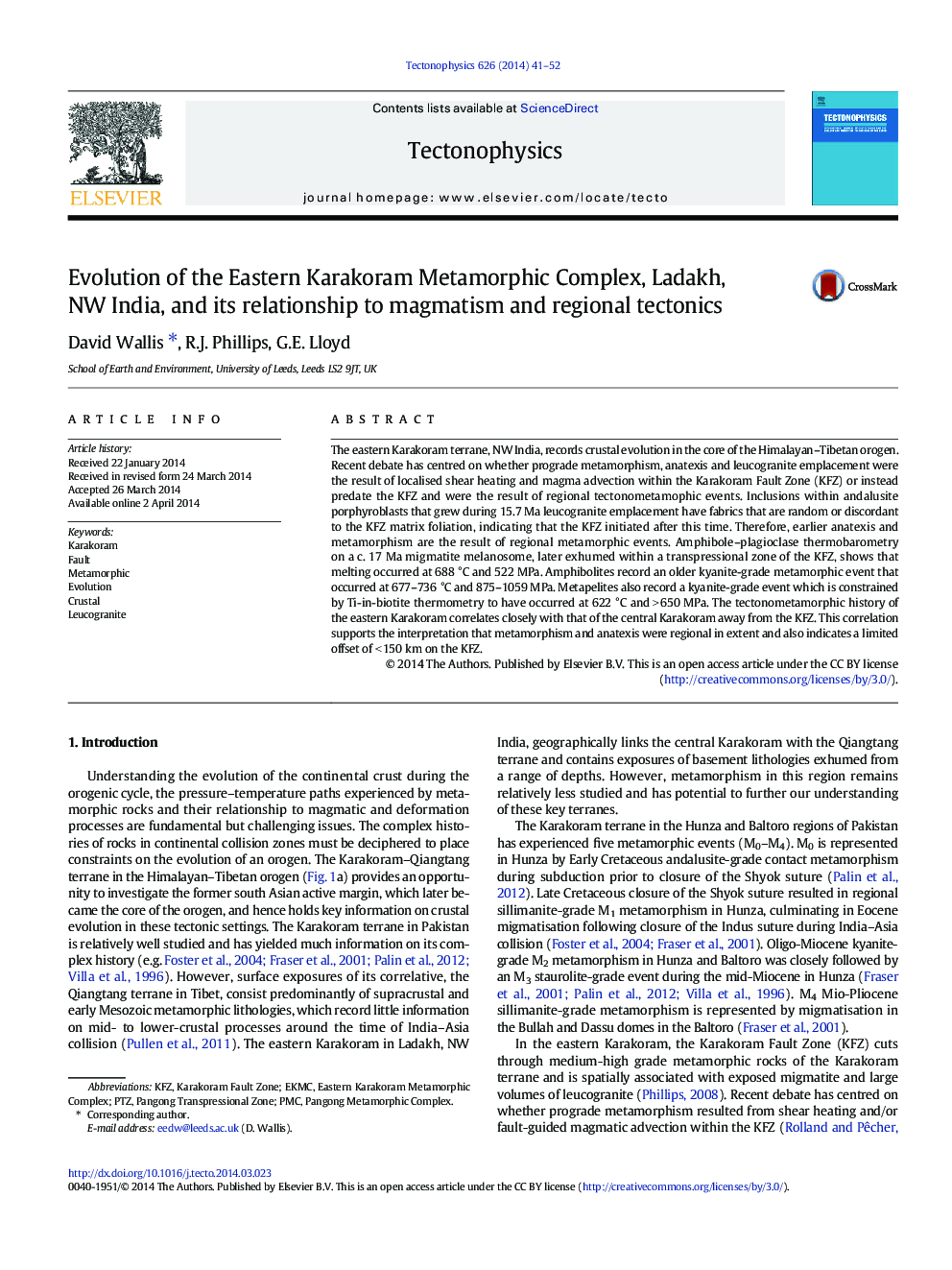| Article ID | Journal | Published Year | Pages | File Type |
|---|---|---|---|---|
| 6433824 | Tectonophysics | 2014 | 12 Pages |
â¢We describe relationships between faulting, metamorphism and magmatism.â¢The 800 km Karakoram Fault postdates peak metamorphism and leucogranite magmatism.â¢The Karakoram does not fit a model of shear heating/anatexis in strike-slip faults.â¢The Karakoram Fault has not accommodated plate-like extrusion of Tibet.
The eastern Karakoram terrane, NW India, records crustal evolution in the core of the Himalayan-Tibetan orogen. Recent debate has centred on whether prograde metamorphism, anatexis and leucogranite emplacement were the result of localised shear heating and magma advection within the Karakoram Fault Zone (KFZ) or instead predate the KFZ and were the result of regional tectonometamophic events. Inclusions within andalusite porphyroblasts that grew during 15.7 Ma leucogranite emplacement have fabrics that are random or discordant to the KFZ matrix foliation, indicating that the KFZ initiated after this time. Therefore, earlier anatexis and metamorphism are the result of regional metamorphic events. Amphibole-plagioclase thermobarometry on a c. 17 Ma migmatite melanosome, later exhumed within a transpressional zone of the KFZ, shows that melting occurred at 688 °C and 522 MPa. Amphibolites record an older kyanite-grade metamorphic event that occurred at 677-736 °C and 875-1059 MPa. Metapelites also record a kyanite-grade event which is constrained by Ti-in-biotite thermometry to have occurred at 622 °C and > 650 MPa. The tectonometamorphic history of the eastern Karakoram correlates closely with that of the central Karakoram away from the KFZ. This correlation supports the interpretation that metamorphism and anatexis were regional in extent and also indicates a limited offset of < 150 km on the KFZ.
